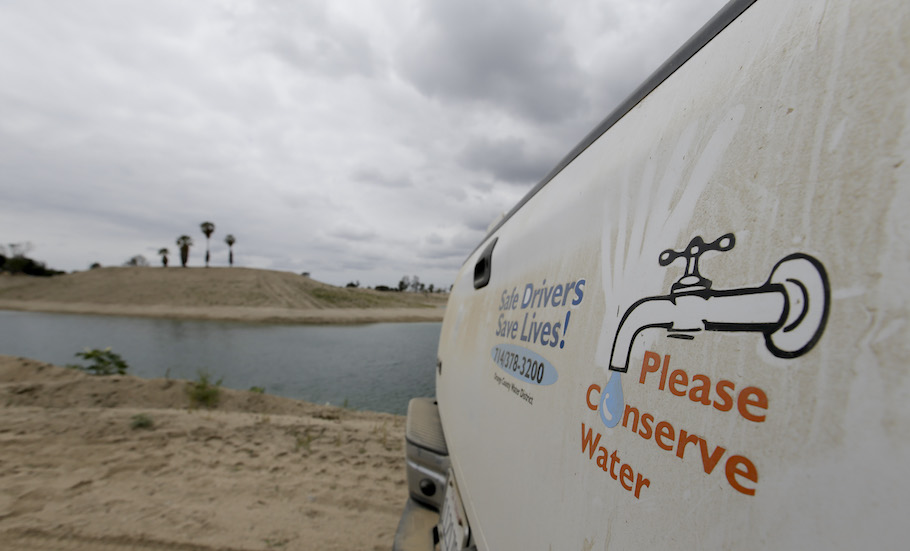California Gov. Gavin Newsom (D) announced a set of revamped water strategies on Thursday, warning that the state’s supply is expected to plunge by up to 10 percent by 2040.
In anticipation of these shortfalls, Newsom unveiled a 16-page action document that focuses on “adapting to a hotter, drier future” by adjusting state priorities “based on new data and accelerating climate change.”
Among the strategies are plans for the expansion of water storage and water recycling capacity, as well as the elimination of water waste and the deployment of new technologies.
“The science and the data leads us to now understand that we will lose 10 percent of our water supply by 2040 — if all things are equal, we will lose an additional 10 percent of our supply by 2040,” Newsom said at a press conference in the Bay Area city of Antioch on Thursday.
“As a consequence of that deeper appreciation, that deeper understanding, we have a renewed sense of urgency to address this issue head on,” the governor continued. “But we do so from a multiplicity of perspectives and ways, not just from a scarcity mindset.”
One of these ways, as outlined in the supply strategy document, involves creating a storage space for up to 4 million acre-feet of water. Doing so, according to the document, would allow the state “to capitalize on big storms when they do occur and store water for dry periods.”
Another strategy included in the document involves recycling and reusing at least 800,000 acre-feet of water per year by 2030, which could optimize the use of wastewater currently released into the ocean.
An average California household uses between one-half and one acre-foot of water each year, according to the Water Education Foundation. California has about 13.1 million households, based on US Census data.
The governor’s plans also call for freeing up 500,000 acre-feet of water for new purposes each year by permanently eradicating water waste and using water more efficiently.
Newsom characterized these strategies as “moving away from a scarcity mindset to one more of abundance.”
“How can we take the existing resources and be more resourceful, in terms of advancing policies, and direct our energies to create more water, to capture more water?” I have asked.
Karla Nemeth, director of the California Department of Water Resources, stressed that implementing these plans will require a firm partnership with local municipalities.
The new strategy, she said, “means we have to do absolutely everything.”
Joaquin Esquivel, chairman of the State Water Resources Control Board, echoed these sentiments, adding that “Mother Nature is not providing us the budgets that we all thought that we were going to depend upon.”
“But there is a path forward,” Esquivel said, stressing the importance of creating and investing “in a 21st-century way.”
One such way, according to the strategy document, requires California to “move smarter and faster” to upgrade its water systems. Such modernization effort could generate enough water for more than 8.4 million households.
Additional water could become available by capturing stormwater, diversifying supplies and optimizing high flows during storm events, as well as through desalinating ocean water and salty—or brackish—water in groundwater basins, according to the document.
Thursday’s press conference took place near the site of a forthcoming, $110 million brackish water desalination plant. That facility will be the first such site in the San Francisco Bay Delta, Antioch’s mayor, Lamar Thorpe, said at the press conference.
The plant, Thorpe said, will “provide the city with a reliable source of drinking water for generations to come.”
With the desalination construction site in the background, Newsom urged Californians to adapt to a changing reality, noting that the new strategies include “specific goals with specific timelines and dollar figures.”
And those dollars, he said, will come from last year’s $5.2 billion surplus and this year’s $2.8 billion surplus.
Californian will be using these funds “to update, not just promote” these critical water supply plans — “moving these projects and doing them with urgency,” without “waiting for the voters,” according to Newsom.
“Money’s not the issue. It’s our ability to attract those dollars, by being more aggressive to draw down those dollars because we have a plan,” the governor added.
.
